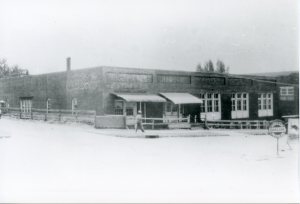In the early twentieth century, hosiery mills began to sprout up in communities throughout the west Georgia piedmont, especially in towns located along the railroad lines. With good access to freight trains, Carroll County had the largest number of hosiery mills in Georgia in 1935, including three in Villa Rica and three in Carrollton. Hosiery production was initially concentrated in the northern states during the nineteenth and early 20th centuries but began to follow the cotton mills south in the 1920s, in part to avoid labor unions. Southern hosiery companies could lower production and labor costs by purchasing modern high-speed, power-driven circular knitting machines that could be operated by women, rather than by men who might demand higher pay.
Carroll County mills produced seamless hosiery and socks made of cotton, silk, and rayon for men, women, children, and infants. Similar to cotton mills, Carroll County’s hosiery companies employed primarily white women and men until federal laws forced them to integrate in the 1960s. However, they did not build company towns, providing more autonomy to employees. With the growing popularity of automobiles, workers could now drive to work from homes in the country or other towns.

While many hosiery mills continued to operate through the 1980s and 1990s, almost all are gone now. However, several of these hosiery buildings survived and are being remodeled as important community landmarks, including the loft apartments in the Lawler Hosiery mill on Bradley Street in Carrollton.


Leave a Reply